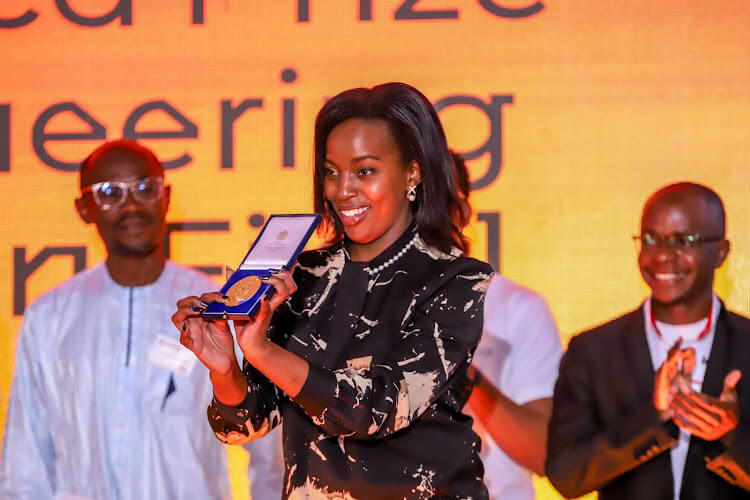|
LISTEN TO THIS THE AFRICANA VOICE ARTICLE NOW
Getting your Trinity Audio player ready...
|
A Kenyan woman and budding innovator, Esther Kimani, clinched the prestigious Africa Prize for Engineering Innovation on Thursday for her groundbreaking agricultural tool that leverages artificial intelligence (AI).
Kimani, along with her team, developed a solar-powered device equipped with AI and machine learning-enabled cameras to rapidly detect and identify agricultural pests and diseases. The innovation, named “Farmer Lifeline Technologies,” earned her the top spot at an event held in a Nairobi hotel, which saw over 80 innovators from across Africa in attendance. Kimani received Sh8.3 million in prize money.
The early crop pest and disease detection device was recognized for its swift identification capabilities, which can reduce crop losses for smallholder farmers by up to 30% and increase yields by as much as 40%. The tool provides real-time alerts within five seconds of an infestation and offers tailored intervention suggestions. Additionally, it notifies government agricultural officers, aiding broader agricultural management efforts.
Speaking after receiving the award, Kimani shared that she developed the innovation while pursuing a Computer Science degree at the University of Eldoret. She was inspired by the significant losses suffered by smallholder farmers in her village in Tigoni, Nyandarua County, due to pests and diseases. Determined to find a lasting solution, she embarked on creating a device that uses computer vision algorithms and advanced machine learning to detect and identify crop pests, pathogens, or diseases.
The device notifies farmers via SMS, providing an affordable alternative to traditional detection methods. Kimani leases the devices for just $3 per month, significantly cheaper than hiring drones or agricultural inspectors. Currently, she and her team are working with about 5,000 farmers in central Kenya, with plans to double this number by expanding to five more counties by the end of the year.
“My parents would lose up to 40% of their crops each farming season, affecting our standard of living. We are empowering smallholder farmers, many of whom are women, to increase their income. We aim to scale to one million farmers in the next five years,” Kimani said. She plans to use her prize money to further develop her innovation, reaching more smallholder farmers and enhancing food production and security in Kenya and across the continent.
Another innovative Kenyan, Kelvin Maina, won Sh2.5 million for his creation, “Eco Tiles.” Maina produces environmentally friendly roofing materials from recycled plastics, which are stronger and lighter than traditional clay or concrete tiles. This innovation addresses both plastic pollution and high building costs.
Maina explained that his custom-made extrusion machine blends different plastics at varying temperatures, eliminating the need for energy-intensive processes like kiln-burning and reducing carbon emissions. The tiles, enhanced with UV stabilization chemicals and construction sand, are durable and sturdy. Since founding his firm in 2016, Maina’s company processes about 20 tonnes of plastics daily to produce around 1,500 tiles, with half a million eco tiles used in constructing about 348 houses. He is now working to expand production capacity to meet high demand, fighting plastic pollution while offering affordable building materials and creating jobs.
Catriona MacArthur, the Senior Manager of the Africa Programme, highlighted that the Africa Prize has supported nearly 150 entrepreneurs across 23 African countries, generating over 28,000 jobs and benefiting more than 10 million people through innovative products and services. The Africa Prize for Engineering Innovation, established by the Royal Academy of Engineering in 2014, is Africa’s largest prize dedicated to developing African innovators and helping them maximize their impact. The prize provides commercialization support to ambitious African innovators.











LEAVE A COMMENT
You must be logged in to post a comment.